A pentimento means a change of mind. It refers to corrections and alterations of the position of a particular part of a composition made by the artist as part of the process of creation. When making these changes, the painter cancels his
previous idea by covering it over with new paint to effect the revision. After this was done, the underlying paint, which expressed his earlier idea, was invisible to the viewer. Over time, due to alterations in the refractive index of
the binding medium in relation to that of the pigments, rendering the paint layer more translucent, the underlying passages often become visible. In general, the existence of pentimenti indicate that a painting is autograph and that, in the case of paintings of which there
are several versions, that it is the first and prime example. In the Salvator Mundi, several changes were made in the course of painting. They are significant revisions and not the slight adjustments a copyist would make.
The blessing hand
The most obvious pentimento is of the thumb of the blessing hand, which had been exposed during the radical scraping away of the original black background in the past and was immediately visible when the painting was first cleaned. Although somewhat damaged, it is clear that the passage had already been
fully modelled. The second, final position of the thumb may have been painted on top of the opaque black background color, not just the thin initial wash. There is evidence that not only was the position of the thumb changed, but the entire
hand was shifted slightly lower and towards the edge of the painting: in the crevice between the thumb and forefinger part of the first position of the palm is visible. It is only a small adjustment, but it was evidently of great importance
for the painter to make a major change at such a late state in the development of the final composition.
Detail of the cleaned state with the pentimento of the thumb exposed.
The new outside contour of the third finger was incised into already dry paint (a similar incision defines the final position of the stole) and delicate black lines, just barely covered by final scumbles, can be seen along the inside contour
not only of that finger, but of also of the bent fourth finger. Some of these black lines appear to have been done with a liquid medium while others in a dry one such as black chalk. They can be seen in the infrared scan and also in visible
light.
Lower position of the blessing hand
The question as to whether or not the blessing hand was originally conceived in a lower position has often been raised. Another interpretation of the Salvator Mundi in a less hieratical pose exists in a number of paintings by Leonardo’s followers, for example, the painting by Marco d’Oggiono in the Galleria Borghese, and another interpretation in the Pushkin Museum by Giampietrino. Both show a young, beardless Christ. In Marco D’Oggiono’s work, the hand is in the lower position and seen at an angle similar that that of the Salvator Mundi while in the Moscow painting the hand faces the viewer and is more open.
![]() Marco D’Oggiono, Salvator Mundi, Galleria Borghese, Rome
Marco D’Oggiono, Salvator Mundi, Galleria Borghese, Rome| Alinari / Art
Resource, NY |
![]() Giampietrino, Salvator Mundi, The Pushkin Museum, MoscowThe Picture Art Collection / Alamy Stock Photo
Giampietrino, Salvator Mundi, The Pushkin Museum, MoscowThe Picture Art Collection / Alamy Stock Photo
The layer structure of sample 1, together with the infrared scan, confirms that the upper part of the blessing hand, above the shoulder, was painted over an initial black wash, whereas below the shoulder the area is held in reserve. This lends credibility to the idea that in Leonardo’s initial conception of the composition the position of the hand was lower. There are many examples of the image of the Salvator Mundi, particularly in Northern Europe based on a lost prototype by Jan van Eyck, in which the blessing hand is below the shoulder. However, for this hierarchical image of Christ as the Salvator Mundi Leonardo could also have remembered Giotto’s Blessing Christ in the Peruzzi chapel of Santa Croce in which the raised hand transects the shoulder at the same point. The upright position of the arm in the red chalk drawing in Windsor associated with the Salvator Mundi might suggest that the hand was always in a higher position.
![]() Hans Memling, Salvator Mundi, The Metropolitan Museum of Art
Hans Memling, Salvator Mundi, The Metropolitan Museum of Art![]()
Giotto, Blessing Christ, North Carolina Museum of Art, Samuel H. Kress Collection
In Leonardo’s painting there is a clear reserve for the portion of the hand below the shoulder. The underlying black wash under the upper part is so thin and translucent that in even in a strong light it is completely invisible. This preliminary wash may have been laid in simply to define the most general outlines of the composition. But if indeed Leonardo’s first idea was to place the hand below the shoulder, he must have abandoned it early on since there is no other technical evidence in the painting to document the existence of such an important pentimento. However, Leonardo’s abundant use of black in his mixtures, the lead white preparation, and his technique of building up volume with exceptionally thin layers of paint make it impossible to study a putative change in the position of the blessing hand with X-ray and infrared wavelengths. Were the painting now accessible, new imaging techniques such as hyperspectral and, in particular, macro XRF scanning, which, in addition to lead, maps other elements contained in pigments and is sensitive to tiny traces of random components such as zinc and titanium, might reveal additional information about the development of the composition. The London version of the Virgin of the Rocks, examined recently with XRF mapping, revealed an in initial sketch for a different angel behind the Christ child, executed in a medium that contained zinc.
![]() Sample from the upper part of the blessing hand, painted over the initial black wash
Sample from the upper part of the blessing hand, painted over the initial black wash![]() Infrared scan of the blessing hand. the black wash is under the upper part of the hand, above the line of the shoulder
Infrared scan of the blessing hand. the black wash is under the upper part of the hand, above the line of the shoulder
![]() detail of the stole
detail of the stole
![]() design of the knotwork pattern of the stole Cheryl Rossum
design of the knotwork pattern of the stole Cheryl Rossum
The position of the stole was adjusted at a late stage in the evolution of the painting. The initial position, slightly higher and with a minor variation in the angle, can be seen in visible light and is
clearer in the infrared reflectogram. Pleats of blue drapery which bordered the earlier design can be seen under the delicate strokes of the embroidered threads, especially on the lower part of the stole on the proper right side. Adjacent to
these pleats is a lay-in of thin, pale greenish blue paint, nearly grey, that is quite distinct from the strong blue of the lapis. From evidence elsewhere in the painting, it is clear that the lapis drapery was among the last passages to be
added. The slight shift in its placement indicates a similarly late stage for the execution of the knotwork design. Fine incisions scored into already dry paint layers record the final adjustment. The band along the top of the bodice was
originally a bit lower, at least in the initial underpainted sketch, but the variation is less significant.
An early idea for the design of the knotworkGraphic, Shan Kuang
Mona Lisa, detail of embroidery
Before settling on the final position of the stole and the elaborate knotwork design, Leonardo sketched a simpler knot-work design. It was never fully completed. One element of it can be clearly seen under
the final pattern where the paint has become translucent due to natural ageing as well as cleaning. It is similar to examples found in his notebooks and to the knots that decorate the bodice of the Mona Lisa. Using a stiff, narrow brush
and pastose pale-yellow paint consisting primarily of lead tin yellow, this initial design is freely sketched, in conception and execution considerably simpler than the final knotwork pattern.
The Orb
Just as there is a reserve for the head and the blessing hand, the hand holding the orb was also left in reserve up to a late stage in the process of painting when the blue drapery under the orb was laid in. Since the blue drapery is visible through the translucent orb, the fourth and little finger were necessarily painted over it, making it the last passage to be completed.
![]() Infrared scan with brightness and contrast enhanced and the original position of the fingers outlined in red
Infrared scan with brightness and contrast enhanced and the original position of the fingers outlined in red![]() The first finger with pink paint of original position visible through the brown color of the orb and a black line establishing the final position with the final contour
The first finger with pink paint of original position visible through the brown color of the orb and a black line establishing the final position with the final contourThere is a shift in the position of the hand, which was originally slightly higher and further from the right edge of the composition. In the infrared reflectogram a stroke of dark paint can be seen in the underlayer around the orb in this passage. Its broad nature suggests that it is not a pentimento, as such, but rather a freely brushed sketch made by the artist at the abbozzo stage as he began to search for the position of this element of the composition. Once defined, he may have used a partial cartoon to transfer the design of the hand, subsequently making a slight shift in its position. As already discussed, spolvero or underdrawing for this transfer are not visible in infrared scans because the paint mixtures contain black. In the center of the orb there is a pin hole made in dry paint, probably left by the compass used to circumscribe the final contours of the sphere. As in the blessing hand, the new position of the fingertips was outlined with black inside the final contour and then scumbled with a light pink color but there is no accompanying incision in dry pain.
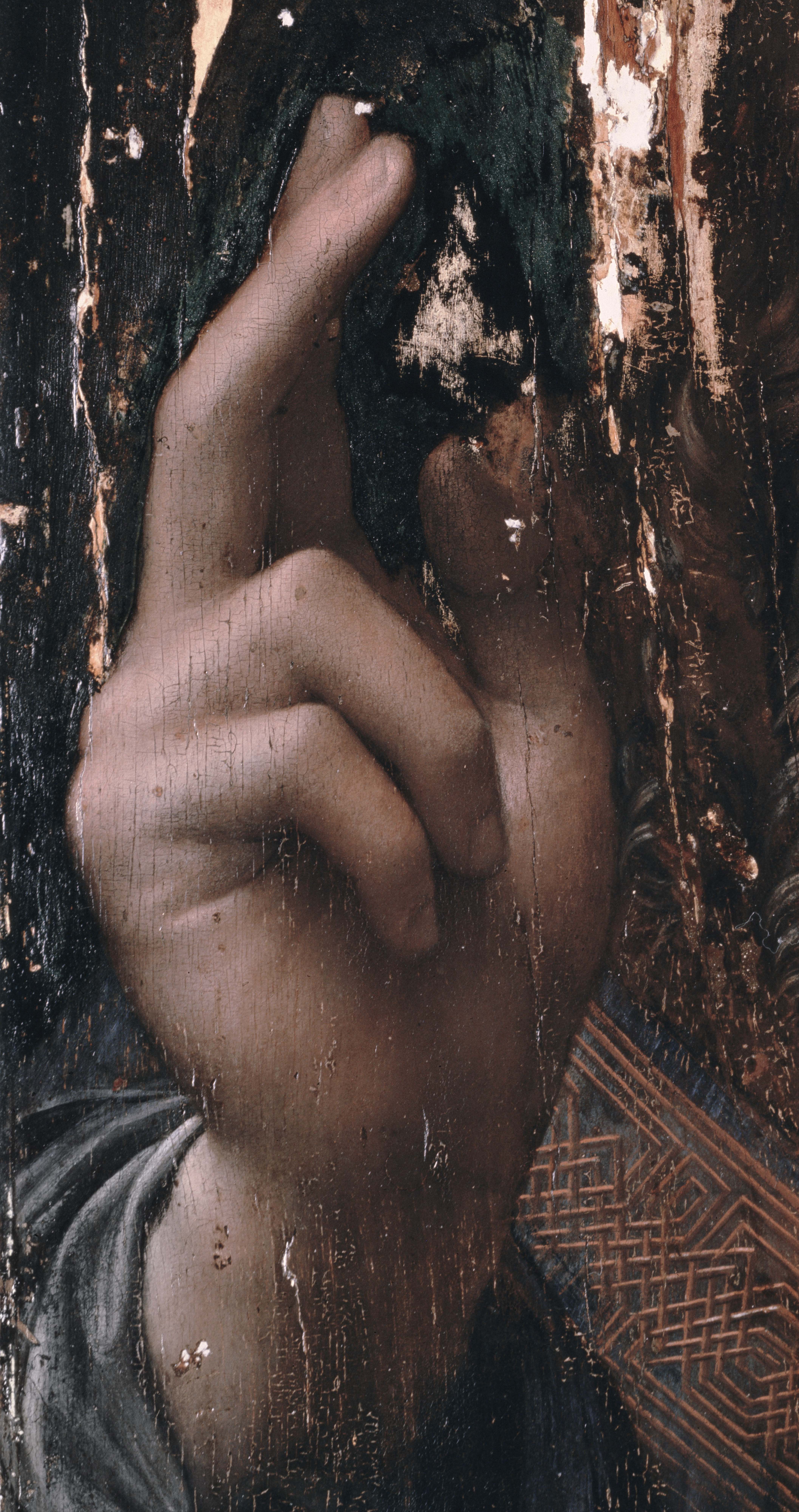

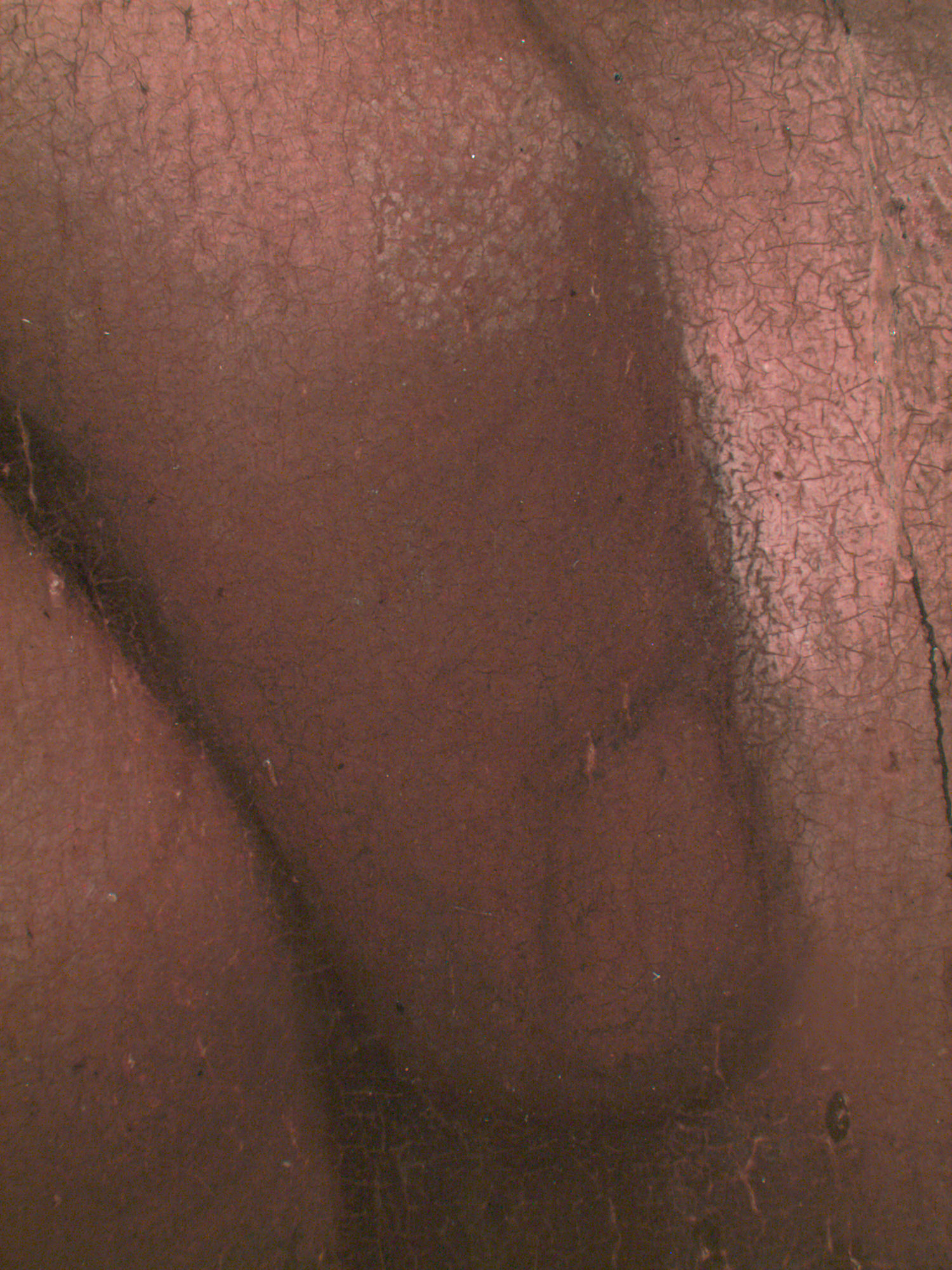
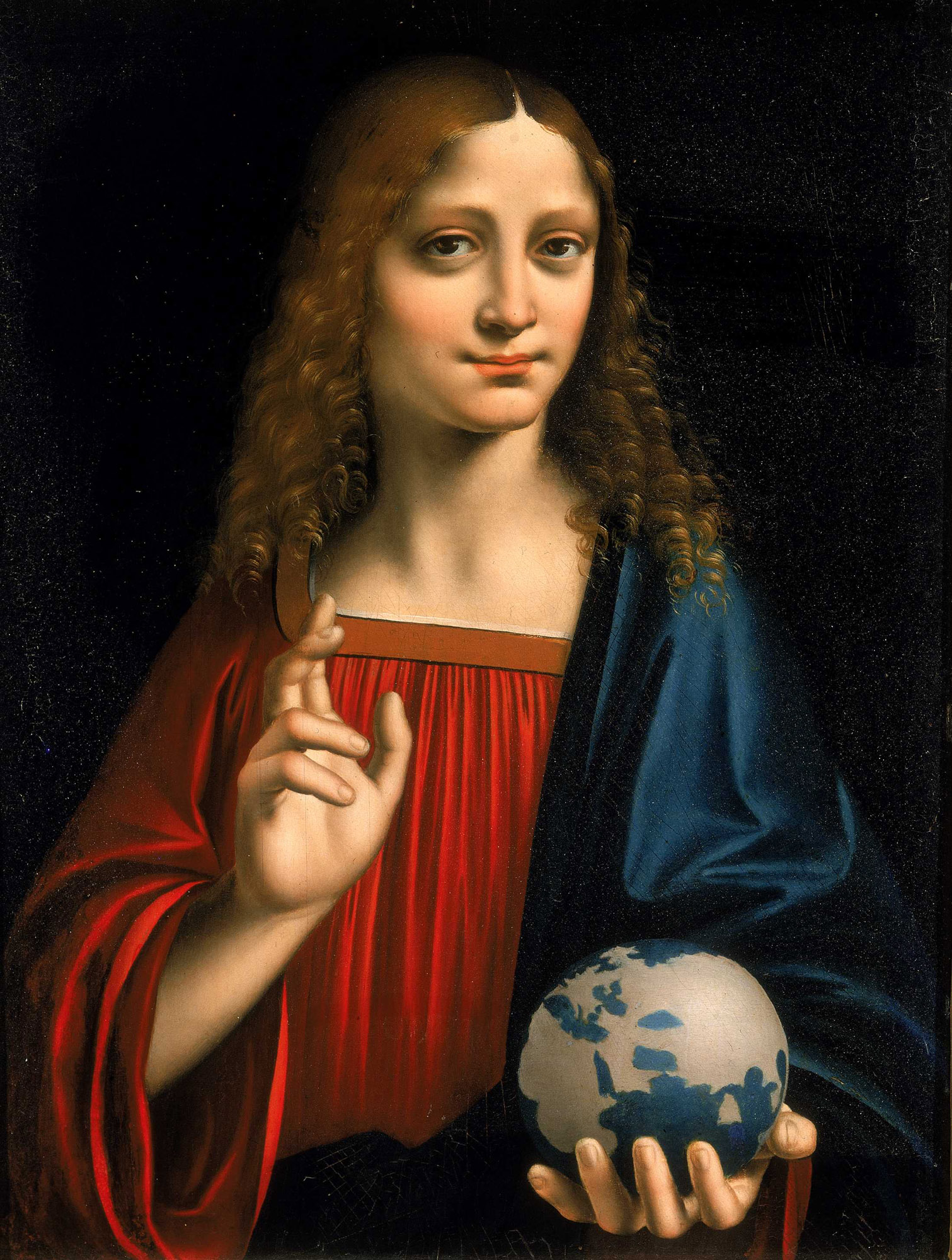 Marco D’Oggiono, Salvator Mundi, Galleria Borghese, Rome
Marco D’Oggiono, Salvator Mundi, Galleria Borghese, Rome Giampietrino, Salvator Mundi, The Pushkin Museum, MoscowThe Picture Art Collection / Alamy Stock Photo
Giampietrino, Salvator Mundi, The Pushkin Museum, MoscowThe Picture Art Collection / Alamy Stock Photo Hans Memling, Salvator Mundi, The Metropolitan Museum of Art
Hans Memling, Salvator Mundi, The Metropolitan Museum of Art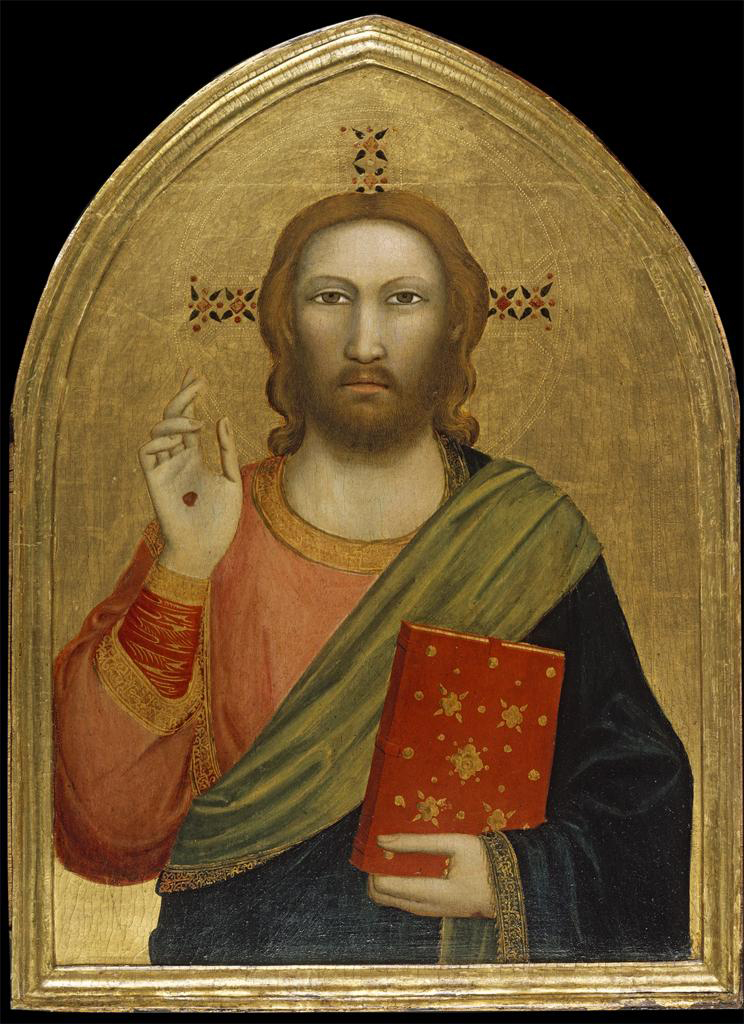
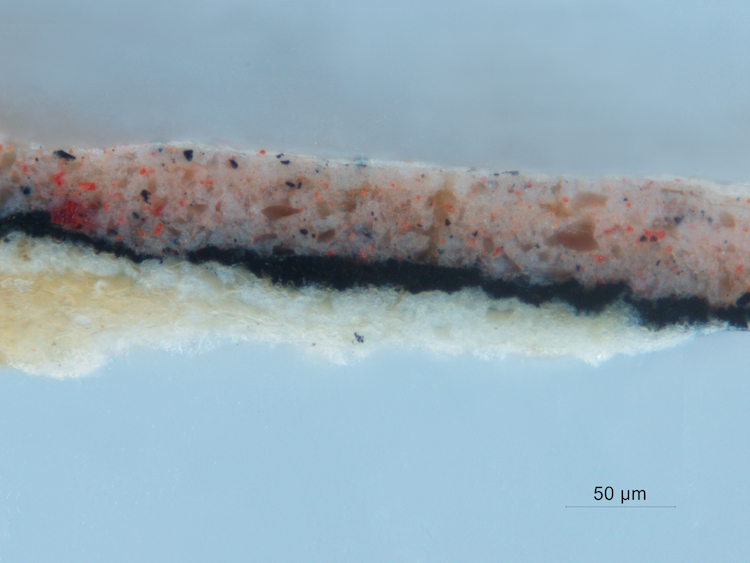 Sample from the upper part of the blessing hand, painted over the initial black wash
Sample from the upper part of the blessing hand, painted over the initial black wash Infrared scan of the blessing hand. the black wash is under the upper part of the hand, above the line of the shoulder
Infrared scan of the blessing hand. the black wash is under the upper part of the hand, above the line of the shoulder detail of the stole
detail of the stole
 design of the knotwork pattern of the stole Cheryl Rossum
design of the knotwork pattern of the stole Cheryl Rossum
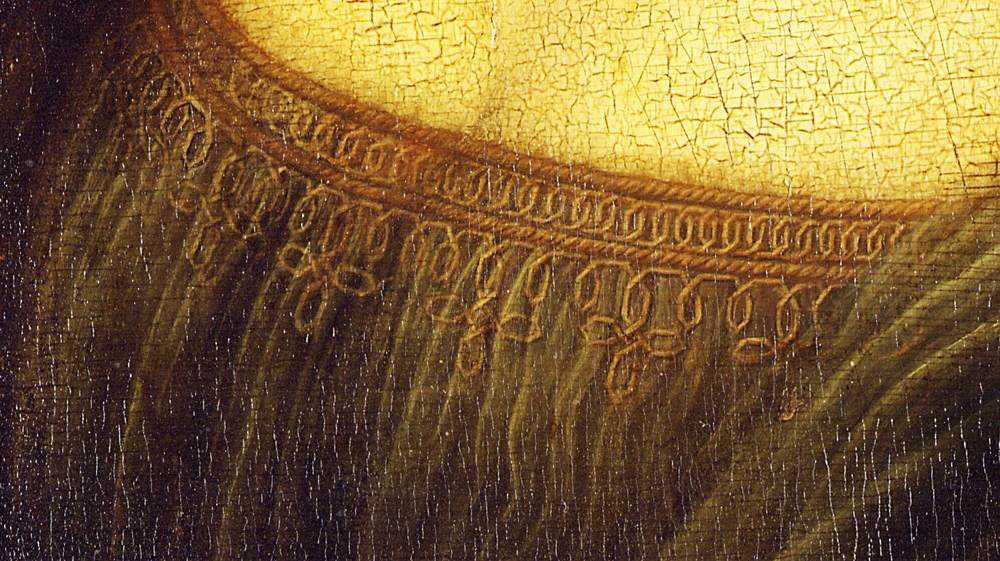
 Infrared scan with brightness and contrast enhanced and the original position of the fingers outlined in red
Infrared scan with brightness and contrast enhanced and the original position of the fingers outlined in red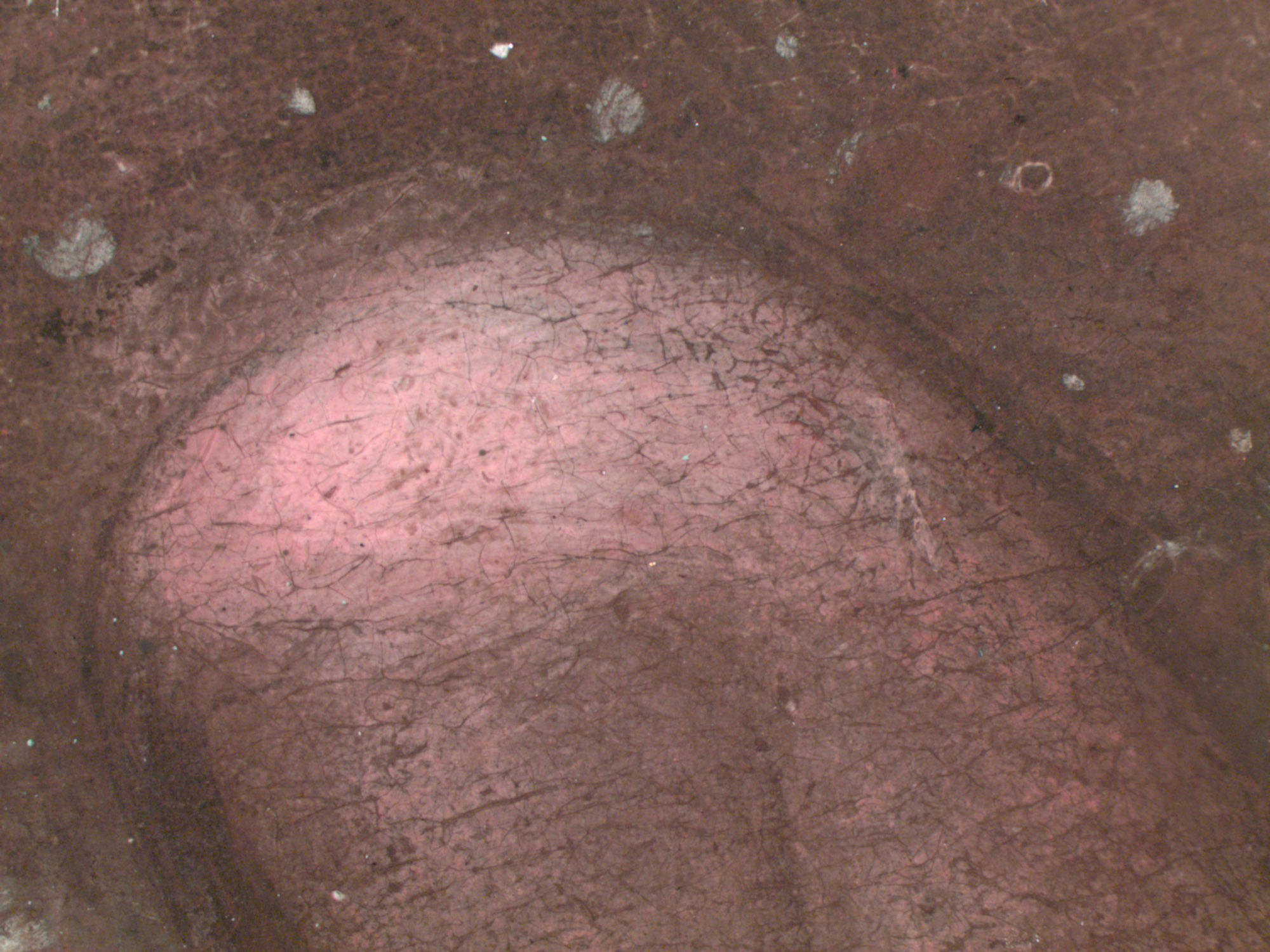 The first finger with pink paint of original position visible through the brown color of the orb and a black line establishing the final position with the final contour
The first finger with pink paint of original position visible through the brown color of the orb and a black line establishing the final position with the final contour